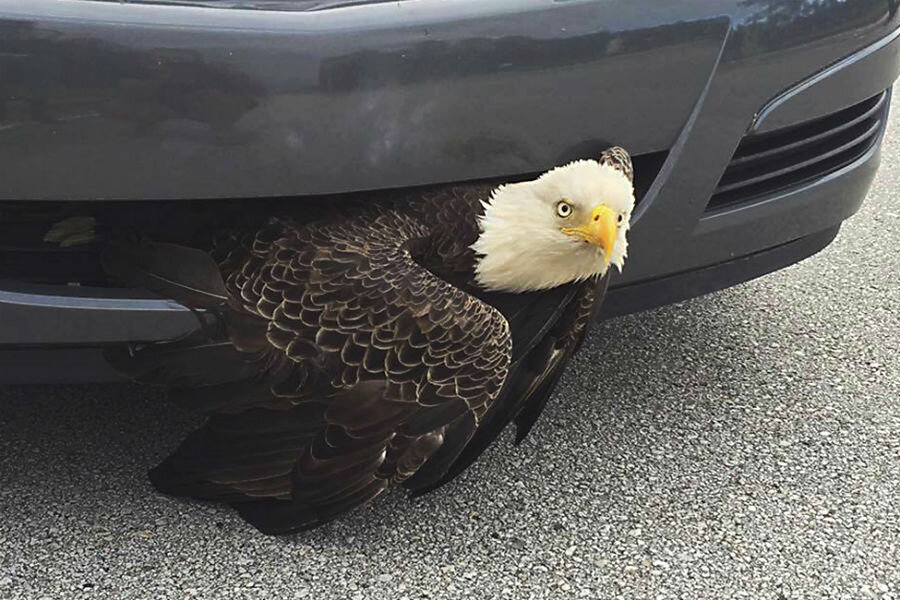How a Florida bald eagle was rescued alive from grill of car
Loading...
| Green Cove Springs, Fla.
A bald eagle that got wedged in the front grill of a Florida car was freed unharmed after a passing motorist noticed the bird just after hurricane Matthew roared past the area.
The Clay County Sheriff's Office says Mrs. Billi West and her son of the Fleming Island area south of Jacksonville noticed the bird peering out of a passing car Saturday in the storm's aftermath.
She says in a video posted on Facebook that they were traveling in their car on Highway 17 when they say an "older gentleman" driving in the other direction. There were several birds on the road, and he hit the eagle, says Mrs. West. They saw that it was stuck in the grill of his car. They chased after the gentleman and got him to pull over. He hadn't realized the bird was there.
They called the sheriff's office, which brought equipment to cut the bird free from the car grill. Her son drove home and retrieved a dog crate and they put the eagle in the crate.
The eagle, who has been dubbed, "Matthew," was taken to B.E.A.K.S. (Bird Emergency Aid and Kare Santuary), a non-profit wildlife rehabilitation sanctuary in Jacksonville specializing in the treatment and care of injured wild birds.
BEAKS' owner, Cynthia Mosling, told CNN that the eagle appears to be a mature male, at least 7 years old. Authorities say the eagle appears to be unharmed. Photos posted of the eagle on the sheriff's office Facebook page show it standing on two feet in a cage.
As The Christian Science Monitor reported, hurricanes can be dangerous for birds, and habitat destruction is one of the greatest concerns.
In an interview with National Geographic in 2012, regarding the aftermath of hurricane Sandy, Center for Conservation Biology Director Bryan Watts said such storms can cause long-term habitat destruction.
“If you remember Hurricane Hugo in the 1980s, it had a huge impact on habitat in North Carolina. It pretty much decimated red-cockaded woodpecker habitat [a species that depends on old-growth forests] in the Francis Marion National Forest,” Mr. Watts said. “Some of the groups we'd expect to be most affected are ones that depend on coastal habitats, such as piping plovers, Wilson's plovers, least terns, etc.”
According to the National Wildlife Federation, hurricane Hugo wiped out 60 percent of 500 groups of birds and 87 percent of trees where the birds lived were destroyed. Some other consequences, as reported by eNature, might just be that the birds will be weakened by hurricanes or end up in inhospitable places when they escape the hurricane.







